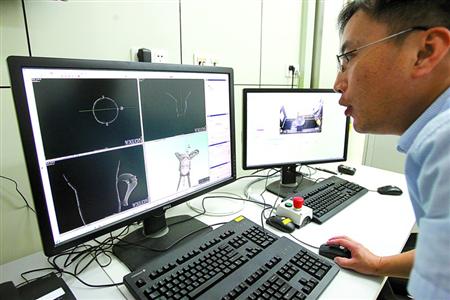 |
|
The museum has equipped the conservation center with a set of advanced research and restoration facilities, with a total value of 65 million yuan. [Photo/CCTV.com] |
At the Shanghai Museum, a new 3D X-ray scanner allows researchers to see processes involved in artwork thousands of years old. It is part of a new conservation center, the largest in the country.
Ding Zhongming has been working on bronze objects in the Shanghai Museum for 13 years. He is now using a newly introduced X-ray computed tomography scanner to illustrate the structure of a bronze plate.
The bronze plate dates back to 2,000 years ago. Seven bronze fishes and frogs on the plate can be rolled, which is rare to see among bronze objects of the same period. Ding says the old 2D X-ray scanners they previously used could only show its plane structure. With the new 3D scanner equipped in the Shanghai Museum Conservation Center, he can clearly see the structure inside the plate.
"We can see how the fish is connected to the base of the plate. There is a pin in it. The scanner helps us a lot with research about bronze relics," Ding said.
His new workspace is Shanghai Museum's new conservation center, which covers more than 9,000 square meters. It is formed by the restoration department and conservation lab of the museum. Researchers can carry out conservation, reconstruction and other research on paintings, bronze objects, ceramics and other cultural relics in the new laboratory building.
The museum has equipped the conservation center with a set of advanced research and restoration facilities, with a total value of 65 million yuan.